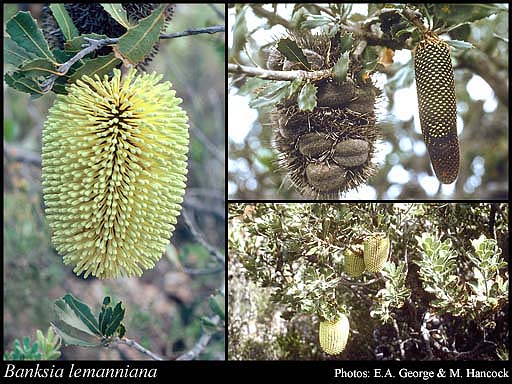- Reference
- A.DC., Prodr. 14:462 (1856)
- Conservation Code
- Not threatened
- Naturalised Status
- Native to Western Australia
- Name Status
- Current
Non-lignotuberous shrub, 1-5 m high. Fl. yellow/green-yellow, Sep to Dec or Jan to Mar. Rocky soils (quartizte, laterite, sandstone), loam. Plains, hillsides.

Scientific Description
Trees or Shrubs, 1-4 m high; branchlets glabrous or hairy. Leaves petiolate, alternate, 40-85 mm long, 17-33 mm wide, hairy; petiole 16-20 mm long; lamina flat, clearly widest above the middle, once divided, pinnately divided, shallowly divided, teeth distinctly pointing towards the apex, with 8-17 lobes on each side, the margins flat. Inflorescences tomentose (with matted or tangled, soft, woolly hairs) or hirsute (with long, rough and coarse hairs), green or yellow; innermost bracts 2-3.5 mm long, hairy. Perianth 32-42 mm long, glabrous, without awns; pistil 35-43 mm long, straight, style glabrous. Follicles hairy, tomentose (with matted or tangled, soft, woolly hairs), orbicular or oblong, 30-45 mm long. Flowers in January, February, March, September, October, November or December. Occurs in the South-west (SW) Botanical Province(s), in the Mallee (MAL) or Esperance Plains (ESP) IBRA subregion(s).
Distribution
- IBRA Regions
- Esperance Plains, Mallee.
- IBRA Subregions
- Fitzgerald, Recherche, Western Mallee.
- IMCRA Regions
- WA South Coast.
- Local Government Areas (LGAs)
- Gnowangerup, Jerramungup, Ravensthorpe.